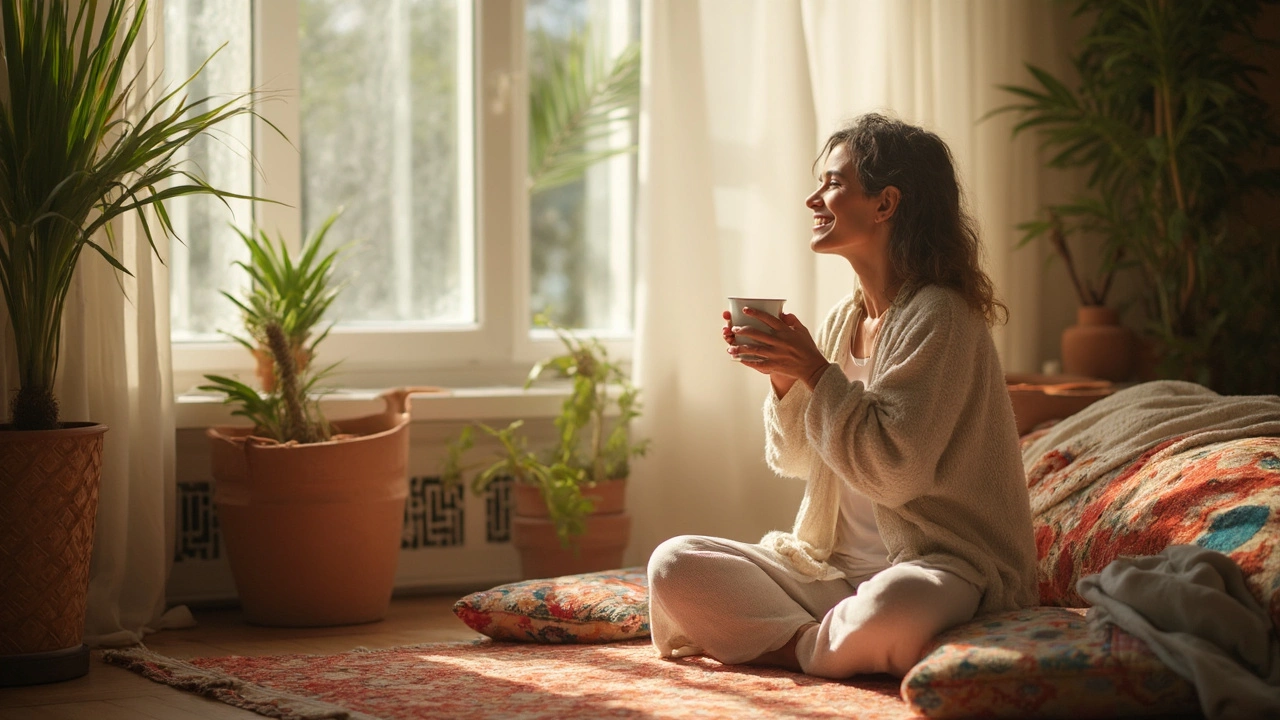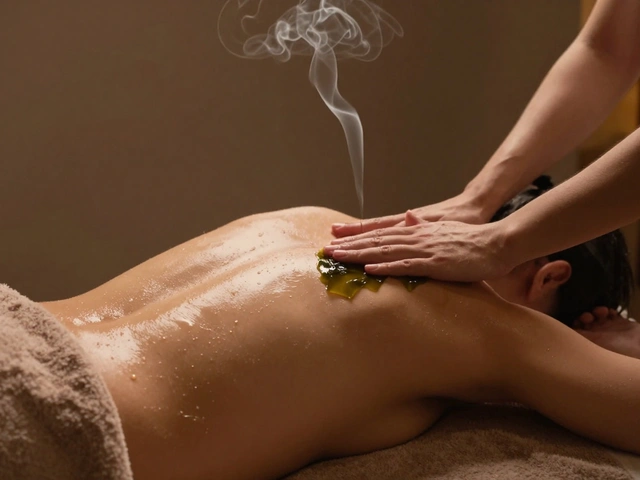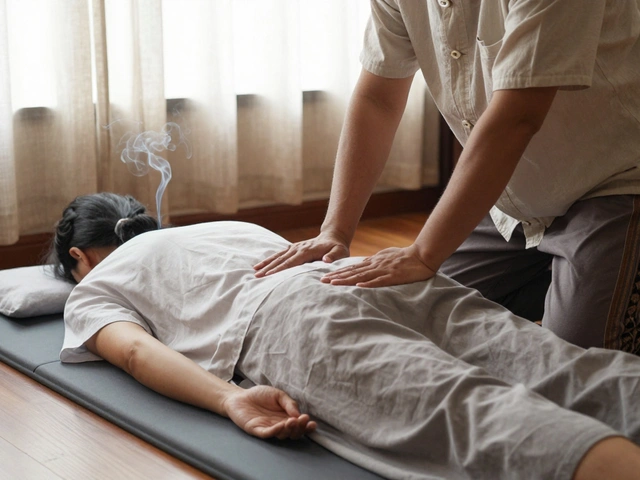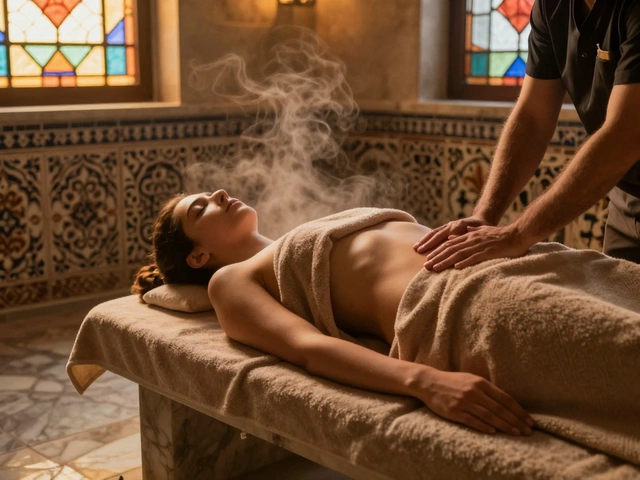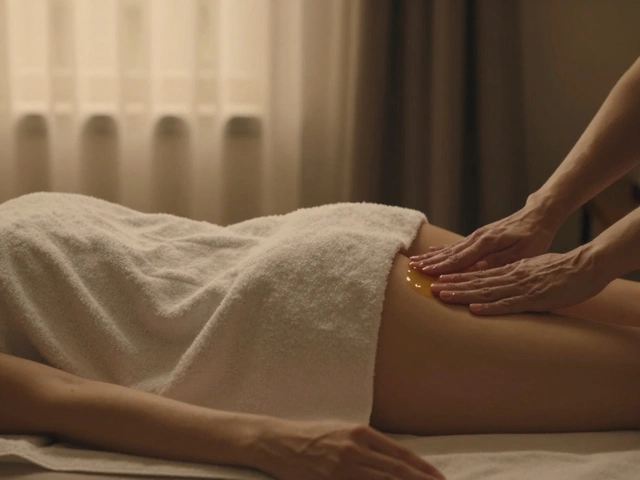Booked a body massage? Smart move. But showing up is only half the game—you want to step out feeling like a whole new person, not just a little less tense. Most folks don’t realize a bit of planning can seriously boost those good vibes.
Forget fancy spa lingo. Here’s the real deal: hydration is key. Drink water before and after your session. Thirsty muscles are cranky muscles. Next, skip heavy meals right before. A belly full of pasta plus a deep-tissue massage is a recipe for regret, not relaxation.
Phones? Mute them. You’re getting a massage, not checking emails. Try to show up five to ten minutes early so you’re not rushing in, already stressed and flustered. If you want to go even further, let your massage therapist know if you have any sore spots or if you hate having your feet touched. They’re not mind readers.
Go in with an open mind. Sometimes the massage will find tension you didn’t even know was there. Breathe, relax, and let the pro do their job. If something doesn’t feel right—too much pressure, too little pressure—say so. Seriously, they’d rather know than guess.
- Key Points for a Great Massage Session
- What a Body Massage Really Is
- Why Body Massage Is Worth It
- How to Find Quality Massage Services Near You
- What Happens During a Massage
Key Points for a Great Massage Session
Getting the most out of your body massage isn’t just about showing up. There are a few moves that make a big difference, based on what seasoned massage therapists and researchers actually recommend.
- Hydrate before and after: Muscles need water to recover and feel their best. The American Massage Therapy Association points out that hydration helps flush out any stuff that gets loosened up during your session.
- Show up on time (or early): Rushing kills the vibe. Arriving with a few minutes to spare helps you chill before things even start.
- Communicate: Got a spot that’s always stiff? Hate the idea of someone poking your shoulder blades too hard? Say something before you start. A Harvard Medical School article says, “Good communication with your massage therapist is key to a positive experience.”
- Wear comfy clothes: You want to walk in relaxed, not yanking at tight jeans or dress pants.
- Limit distractions: Put your phone on silent or leave it in your bag. This is your break from all that noise.
- Eat light: A light snack is fine, but avoid heavy meals right before your massage session. It’s hard to unwind when your stomach is working overtime.
- Set intentions: Are you there to relax, or do you want to focus on sore muscles from the gym? Knowing your goal helps your massage therapist tailor the session.
| Pro Tip | Why It Matters |
|---|---|
| Hydrate | Helps body recover, reduces soreness |
| Arrive early | Keeps your stress low |
| Clear communication | Ensures a custom experience just for you |
“Massage is most effective when your therapist knows exactly what you need. Don’t be shy about discussing discomfort, injuries, or your goals for the session.”
— Harvard Medical School, Health Letter
If you follow these massage tips, you’ll find your time on the table feels way more rewarding. Small tweaks, big difference.
What a Body Massage Really Is
So, what’s a body massage anyway? Think of it as a hands-on reset button for your whole body. A massage isn’t just rubbing your back—it covers everything from your shoulders down to your toes, depending on what you need. The main goal? Get those stubborn knots out, boost blood circulation, and help you chill out. It’s not magic, but it sure can feel like it after a long week.
At its core, a body massage is all about using touch, pressure, and movement to relax muscles and melt away tightness. A pro massage therapist targets muscles, tendons, and sometimes even joints, using different techniques to loosen you up. Don’t be surprised if they use special lotions or oils—they help their hands glide smoothly and keep your skin happy.
When you hear “Swedish massage,” think gentle pressure and long, flowing strokes. If it’s “deep tissue,” you’re getting firmer pressure aimed right at those deep muscle groups. Both can be a full massage session, but they feel pretty different. Hot stone massages, sports massages, aromatherapy—there’s a style for just about everyone. But no matter the type, the big picture stays the same: release tension, cut down on pain, and help your mind unplug.
- Swedish massage: Soft, long strokes for all-over relaxation.
- Deep tissue massage: Focused pressure for serious tension relief.
- Sports massage: Targets areas you use most in physical activity.
- Hot stone massage: Uses warm stones to ease muscle stiffness.
Ever wonder why you sometimes feel lighter or even a little spaced out after a body massage? It’s got science behind it. A study published in 2022 showed regular massages can help lower cortisol—that “stress hormone” everyone wants less of. No surprise people who get massage therapy often report feeling less anxious and sleeping better.
Whether you’re fixing posture from too much desk time, looking to recover from workouts, or just need to hit pause on daily chaos, a body massage knocks out tension better than pretty much anything else you could do in an hour. It’s more than pampering—it’s legit self-care backed by real results.

Why Body Massage Is Worth It
If you’re still wondering what the big deal is about booking a body massage, it’s more than just a nice hour off your feet. The benefits are real—and proven by science. Let’s get right to what actually makes a massage session worth your time and money.
- Stress Relief: Hands down, this is why most people go for a massage. A simple Swedish massage can lower cortisol (that’s your stress hormone) by up to 30% in a single session. Less stress means better sleep and a clearer mind.
- Pain and Tension Soother: Regular massages help with everything from sore backs to nagging shoulder knots. For people with real issues like desk-job aches or sports injuries, deep-tissue work can cut pain levels by 25-50% according to a 2023 trial at a leading rehab clinic.
- Better Mood: Massages trigger the body to release endorphins—the same feel-good chemicals you get from exercise. No sweat required.
- Boosts Circulation: Moving muscles and loosening knots gets your blood flowing. That helps your body deliver more oxygen to tired muscles and clear out the stuff that makes you feel stiff and sluggish.
- Helps Sleep: More than a few people say they sleep way better after a good massage. In fact, a Cleveland Clinic survey showed nearly 60% of regular massage fans reported deeper sleep after sessions.
| Benefit | Fact/Stat |
|---|---|
| Reduced Stress | Up to 30% drop in cortisol after one session |
| Pain Relief | 25-50% reduction in chronic pain reported |
| Better Sleep | 60% say massage helps them sleep better |
Bottom line: getting a regular body massage isn’t just about pampering. It’s like a health reset button—less stress, less pain, more energy. If you think you don’t have time for a massage, remember, you probably don’t have time to feel sore, sleepless, or stressed out either.
How to Find Quality Massage Services Near You
Let’s face it, finding a body massage that’s actually worth your money can feel like hunting for the world’s best burger. Reviews look good, but you never know until you try. Here’s how to seriously up your odds:
- Start with word-of-mouth. Honestly, nothing beats a solid recommendation. Ask friends, coworkers, or even your gym buddies where they go. If people keep mentioning a spot, it’s worth checking out.
- Don’t trust just any Google review. Look for detailed feedback—does the reviewer mention what kind of massage they got, or if the therapist listened to their needs? The more specific, the better.
- Check credentials. A licensed massage therapist isn’t just a label. Licenses matter because they mean someone’s passed exams and follows legit rules. You can ask to see their certification or check your state’s board online.
- See what services they actually offer. If you want deep tissue or Swedish, double-check it’s listed on their menu. Some places focus on sports massage, others do classic relaxation. Make sure you’re not booking in the wrong place.
- Pay attention to cleanliness and vibe. The lobby and rooms should look and smell clean. If something feels sketchy, trust your gut and bounce.
- Tech can help. Try booking platforms like Mindbody, Treatwell, or even Google Maps. These often show real-time availability and will sometimes have exclusive deals. Plus, you can filter by location, price, and ratings.
- Ask about the therapists. Some places let you pick a specific therapist, which is great if you want the same person every time or have a preference (male/female therapist, special training, etc.).
Here’s a quick look at some things to compare when searching:
| Service | Licensed Therapists? | Types of Massage | Booking Options | Avg. Review Score |
|---|---|---|---|---|
| Local Spa Chain | Yes | Swedish, Deep Tissue, Sports | Online & Walk-in | 4.6 |
| Independent Studio | Yes | Hot Stone, Classic Relaxation | Call & Online | 4.8 |
| Mobile Massage App | Varies | Table Massage at Home | App Booking | 4.5 |
Bottom line: Don’t settle for the cheapest or closest massage just because it’s easy. With a bit of checking around, you’ll save yourself a headache—literally—and find a spot that leaves you wanting to come right back.

What Happens During a Massage
Not sure what actually goes down during a body massage? You’re not alone. The first time can feel awkward if you don’t know what to expect, but it’s more straightforward than you might think. Here’s how it usually rolls, step by step.
When you walk in, you’ll chat briefly with your massage therapist. They’ll ask about any aches, pains, or spots you want focused on or skipped. Don’t be shy—they’ve heard it all, and this is your time. Usually, you’ll be shown to a private room, where you undress to your comfort level. Most people keep their underwear on, but really, it’s up to you. You’ll lie on the massage table, and there’ll be a sheet or towel for modesty.
The session kicks off with the therapist using gentle pressure to warm up your muscles. Oils or lotions (unscented or lightly scented if you prefer) help their hands glide easily on your skin. After the warm-up, the pressure may increase, especially if you’ve booked deep tissue work. If it hurts in a bad way, speak up—it’s totally normal and expected to ask for more or less pressure.
Throughout the session, you’ll usually get a head-to-toe routine, but therapists adjust based on what you need. Typical moves include:
- Kneading (kind of like kneading dough—great for sore spots)
- Long, gliding strokes (called effleurage, this relaxes muscles)
- Circular movements (helps loosen knots)
- Occasional tapping or even gentle shaking (sounds weird, feels great)
Expect calm music, dimmed lights, and maybe some aromatherapy in the air. The point? Getting your brain to chill out as much as your body. It’s common to drift off or feel super relaxed—that’s totally normal. Some people even snore.
Usually sessions run 60 minutes, but you’ll find 30- or 90-minute options too. According to the American Massage Therapy Association, about 60% of clients ask for 60-minute sessions, so you’re in good company if that’s your pick.
| Session Length | What to Expect |
|---|---|
| 30 minutes | Spot treatment or focus on one area (e.g., back or neck) |
| 60 minutes | Full body massage covering all major muscle groups |
| 90 minutes | Full body with extra time on problem areas |
Afterwards, they’ll let you know the session is over, leave the room, and give you time to get up and dressed. Don’t leap off the table—take a minute, especially if you’re feeling lightheaded. Drink more water if you can, since massage moves fluid around your body and you’ll probably want to stay hydrated.
If you want, you can ask for advice before you go. Therapists are usually happy to suggest stretches or ways to keep those good vibes going between visits. Massage benefits kick in right after your session, but how long they stick around often depends on what you do next.
